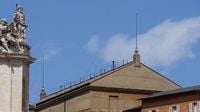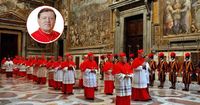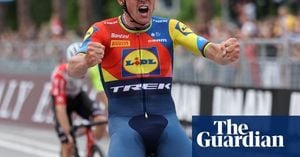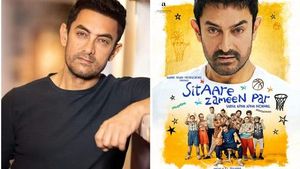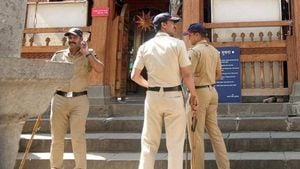The world turns its gaze to the Vatican as the conclave to elect the new Pope commences on May 7, 2025. With 133 cardinals gathered, including two from Mexico, the election follows the death of Pope Francis on April 21, 2025. The new leader will guide over 1.4 billion Catholics globally, making this event a pivotal moment in the history of the Catholic Church.
The conclave begins in the Sistine Chapel, where the cardinals will meet behind closed doors, free from outside influence, until a new pope is elected. The voting process is expected to last at least two to three days, with a decision likely to be announced between May 8 and May 10. The cardinals will enter the chapel at 4:30 PM Rome time (8:30 AM Mexico time) after an opening mass at St. Peter's Basilica, which will be broadcast live.
Among the participating cardinals are Mexico's own Carlos Aguiar Retes and José Francisco Robles Ortega. Aguiar Retes, 75, serves as the Archbishop Primate of Mexico and has been vocal about inclusivity within the Church. He famously stated in 2020, “Everyone is a child of God.” His counterpart, Robles Ortega, 76, is the Archbishop of Guadalajara and brings experience from his previous participation in the election of Pope Francis in 2013.
Mexico has six cardinals, but only Aguiar Retes and Robles Ortega are eligible to vote, as the rules stipulate that only cardinals under 80 years of age can participate in the voting process. The other four Mexican cardinals, including Alberto Suárez Inda and Felipe Arizmendi Esquivel, will not be able to cast their votes due to their age, with Suárez Inda being 86 and Arizmendi Esquivel 85.
The conclave is not just a routine election; it represents a critical juncture for the Catholic Church, which is grappling with issues ranging from social justice to modernity. The cardinals represent a diverse global Church, with electors from 71 nations. The countries with the most representatives include Italy (17), the United States (10), and Brazil (7).
As the cardinals gather, the world waits for the signal from the chapel's chimney. The color of the smoke will indicate the outcome of the votes: white smoke signifies that a new pope has been elected, while black smoke means that the voting will continue. Each day of the conclave will feature four votes, except for the first day, which will have only two.
Among the names being discussed as potential successors are Pietro Parolin from Italy, Luis Antonio Tagle from the Philippines, Matteo Zuppi from Italy, and Fridolin Ambongo from Congo. Each candidate represents different visions for the future of the Church, ranging from traditional conservatism to progressive pastoral care.
The legacy of Pope Francis looms large over this conclave. His tenure has been marked by significant reforms and a commitment to social issues, including environmental concerns and the rights of marginalized communities. However, his leadership has also highlighted divides within the Church, with some factions calling for a return to more traditional values.
This conclave is not merely about selecting a new leader; it is about determining the direction of the Catholic Church in the 21st century. With Mexico's cardinals in attendance, the country is poised to play a crucial role in this historic decision. Mexico, home to over 90 million Catholics, represents one of the largest Catholic communities in the world, and its cardinals' participation is seen as both strategic and symbolic.
As the conclave unfolds, millions of faithful around the globe will be watching closely. The anticipation builds as the cardinals prepare to cast their votes, each aware of the weight of their decision. Will the new pope embrace the legacy of Francis, or will he chart a different course for the Church? The world waits with bated breath for the moment when the smoke rises from the Vatican, signaling the arrival of a new spiritual leader.
In the coming days, as the cardinals deliberate, the atmosphere will be charged with expectation. The conclave is a time for reflection, prayer, and discussion among the electors, who must reach a two-thirds majority to elect the new pope. If no agreement is reached after three days, the process may pause for a day of prayer and reflection before continuing.
As the cardinals enter the conclave, they carry not only their individual hopes and beliefs but also the collective aspirations of the Catholic faithful. The decisions made in the Sistine Chapel will resonate far beyond the walls of the Vatican, impacting the lives of millions across the globe.
Ultimately, the conclave of 2025 is a moment of profound significance for the Catholic Church and its followers. With the eyes of the world upon them, the cardinals will strive to choose a leader who can navigate the complexities of modern faith while honoring the traditions of the Church. As the countdown to the first vote begins, the anticipation for the 'Habemus Papam' announcement grows, marking the dawn of a new era for the Catholic Church.
